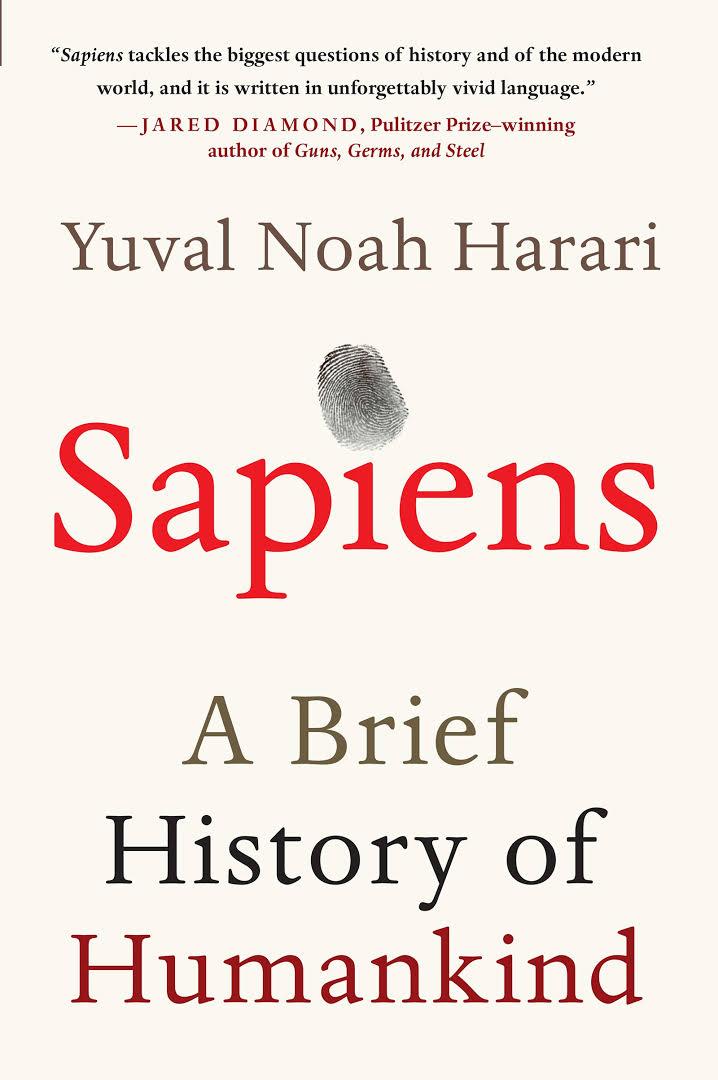‘Sapiens’ follows our species from one revolution to the next
Why did Barack Obama, Bill Gates, and Mark Zuckerberg all recommend the book “Sapiens: A Brief History of Humankind”? Did it help them decode the uncertainties of a declining American empire?
This richly textured summary of 2.5 million years of human history, with provocative questions at every turn, from the Jewish historian Yuval Noah Harari could well be a kind of Powerpoint briefing on the world’s multiple crises today.

It begins by dismissing the impression of the linear progression of the earliest known species of the genus homo—Homo rudolfensis in East Africa, Homo erectus in East Asia, Homo soloensis in Java, the pygmy Homo floresiensis in Flores Island, Indonesia, Homo neanderthalensis in Europe and western Asia,and Homo denisova in Siberia.
“The truth,” Harari writes, “is that from about 2 million years until around 10,000 years ago, the world was home, at one and the same time, to several human species.” You’re drawn right into the drama of our ancestor Homo sapiens’ emergence—which fossils recently unearthed in Morocco point to at least 300,000 years ago, much farther back than previously believed.
So how did this “wise man” get trapped in his own discovery of nuclear power that could wipe us all out today? Now Harari takes us to where it all began—sapiens’ larger brain in some kind of genetic mutation that set off his revolutionary career on planet Earth.
Sapiens took his first radical leap around 70,000 years ago in Africa by inventing language. That’s how larger groups began banding together beyond their caves, says Harari. And language was the beginning of shared myths and stories that gradually glued ever growing bands of sapiens.
“Cognitive revolution,” he calls it: a time when man was spreading throughout the planet. Adapting to extreme conditions from deserts to sub-zero climates, sapiens went on to breach the last great barrier by learning to sail over vast waters onto lands he’d never seen before.
A second leap came around 12,000 years ago as more and more sapiens abandoned hunting and gathering and began farming. In their wake, however, came the “massive destruction” of millennia-old animal life in Australia, New Zealand, the Pacific islands and the America. That foreshadowed today’s worrisome extinction of both plant and animal species.
But sapiens paid a high price for his “agricultural revolution,” too—a downward spiral in his quality of life with high infant mortality and back-breaking labor evidenced by deformed adult skeletons found by archaeologists.
This is how it happened per Harari: More food for longer periods encouraged sapiens to breed more children. But more mouths to feed forced mothers and children to work in farms, too. That left less time for breastfeeding, gradually weakening children’s immune systems. Diphtheria, smallpox and measles could now easily spread in overcrowded homes and villages. The result was that only a third or fourth of children reached adulthood in early agricultural societies.
Granaries threatened by thievery also obliged farmers to protect their food with their own lives. Weather-related crop failures and consequent mass starvation complete the picture of agriculture as “a major miscalculation”. This is a livewire talking point for today’s reformers, including protesters against industrial farming’s massive releases of pollutant methane gas in global warming.
The book moves on to increasingly complex human societies with the intertwined histories of empires gobbling up diverse small nations as religion thrust out for converts and big money sought new markets and sources of raw materials. Harari’s finely-wrought chapters on wars of conquest in Europe’s Age of Empire, with missionaries and merchants always along for the trip, now set the stage for a new member of their world enterprise—science, the major game-changer.
The discovery of America 500 years ago started the Scientific Revolution, Harari writes. That triggered the Industrial Revolution 250 years ago, which triggered the Information Revolution 50 years ago. The Modern Age had begun its steady build-up to warp speed.
The historian begins to go beyond the bounds of his discipline at this point, however. Pausing to consider the question of human happiness in the Industrial Age, with all the good and ill that religions (and ideologies, the new religions), empires and global trade have visited on humanity, “Sapiens” approaches climax.
Strangely, what Harari sees despite the wars that have blighted humanity is “the arrow of history moving mankind to larger and larger unity.” And it’s not just future unity he sees, but one with a kind of leadership never seen before: “More and more people believe that all of humankind is the legitimate source of political authority...that safeguarding human rights and protecting the rights of the entire human species should be the guiding light.”
That may be arguable, but the final chapters compel a long reflective halt as Harari launches into the biotechnology revolution that “could be the end of homo sapiens as we know him.” Beg your pardon, sir?
Well, he reasons, with the growing number of pacemakers, organ transplants and microchips embedded in human bodies today, sapiens could well be on the way to turning into Homo cyborg. Meanwhile there is also Project Ganymede whose experiments on chemical alterations of human bodies postponing death indefinitely could be the next frontier.
Judge for yourself. As for me, it’s too bad sensationalism proved irresistible even to an original thinker and engaging historian like this. — BM, GMA News
"Sapiens: A Brief History of Humankind" by Israeli historian and professor Yuval Noah Harari was published in Hebrew in 2011 and in English in 2014.



